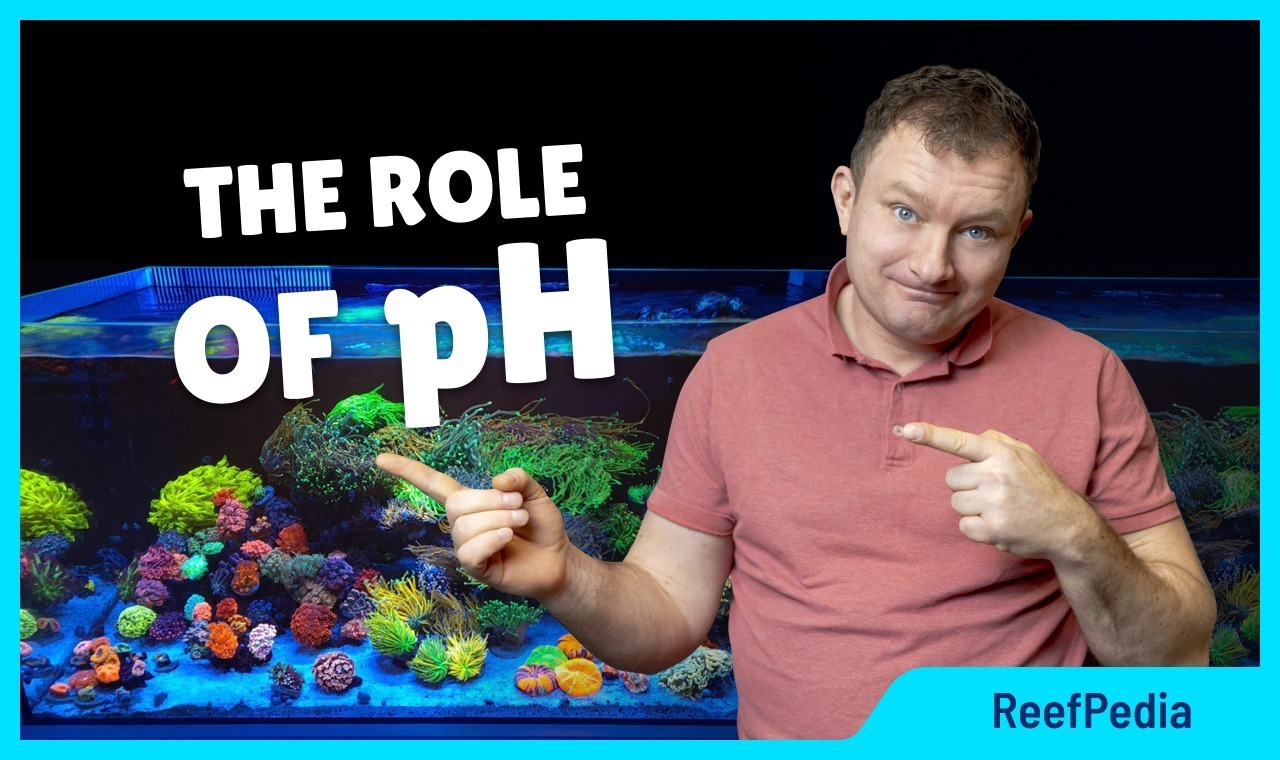Why pH matters?
The correct pH level is very important for the ecosystem in marine aquaria. The pH value indicates whether the water is acidic or alkaline. The pH value is expressed in the range from 0 to 14. It is worth mentioning that, from a scientific point of view, pH does not actually indicate acidity or alkalinity, but the hydrogen potential.
If water contains equal amounts of hydrogen (H+) and hydroxide (OH-) ions, it is said to be neutral (pH 7.0). An increase in hydrogen ions makes the water more acidic and low in pH. Conversely, an increase in hydroxide ions increases the alkalinity (alkalinity) of the water.
Optimum pH and its benefits for saltwater animals
The optimum pH value for a reef tank is between 8.1 and 8.4. It is worthwhile to ensure a stable pH, which affects the solubility of nutrients in the water and also helps the corals in the aquarium to calcify faster. A stable optimum pH means less stress for corals. Let’s jump into some details.
Calcium + carbonate = calcium carbonate. There is generally much more bicarbonate than carbonate in a reef tank.
Bicarbonate is carbonate with an extra hydrogen atom, which causes a bit of a problem for the pH in the aquarium. When corals consume bicarbonate, they have to remove the hydrogen atom before combining with calcium. The hydrogen atom remains near the coral skeleton.
As I mentioned, more hydrogen means lower pH, less coral growth and potentially animal health problems. So when a hydrogen atom is near a coral, it lowers the pH around the coral, so the coral repels it.
The less hydrogen in the seawater, the easier it is for the coral to shed the hydrogen atom. This means that the pH in the aquarium should be higher, as this effects in less hydrogen in the water, which in turn helps the coral to grow faster.
Maintaining the right pH in a marine aquarium can also help keep fish healthy. A pH range between 8.1 and 8.4 in marine aquaria has an antiseptic effect that destroys microorganisms on the skin, mucous membranes and in infected fish wounds. The higher the pH, the easier it is for the fish to breathe, as there is more oxygen in the water. The right pH makes for healthier fish and better growth.
The pH of the water is the decisive factor that causes waste and decaying fish food to become ammonium or ammonia. At a higher pH more ammonia is formed, fortunately the Nitrosomonas bacteria feeds on ammonia and converts it into nitrite (NO2) (nitrification process in the marine aquarium). The Nitrobacter bacteria feeds on nitrite in the water and converts it into nitrate (NO3), which is the least harmful and the animals cope well with it.
In this article you can read more about nitrifying bacteria in a marine aquarium.
Fluctuations of pH in the marine aquarium and their effects
The pH most often fluctuates diurnally. It is higher during the day and lower at night.
Lighting in the marine aquarium also causes diurnal fluctuations.
Coral photosynthesis and bacterial activity have a significant impact on the acid content of the limited water, which also influences pH fluctuations.
Due to photosynthesis, corals and certain groups of bacteria release more oxygen into the water during the day and absorb CO2 from the water. At night, the opposite is true – CO2 is released into the water.
Fluctuations in pH have a significant effect on bacteria and nutrient concentrations in the aquarium because at lower pH values more PO₄³- will be released into the water. Such fluctuations are not beneficial for corals as they cause stress, which negatively affects their appearance and growth.
A stable pH value is very important, otherwise we will have nutrient fluctuations in the water, problems with algae growth, and dino or cyano infestations may also occur. Fluctuations of 0.3-0.4 can be considered safe for the aquarium.
Too strong a fluctuation in pH is also a fluctuation in nutrients, including PO4, which can cause burned growth tips on hard corals, death of acropora and calcareous algae, shrinking of soft corals or sluggishness and disease in fish.
Too low or too high pH in the aquarium
Too low or too high a pH in a marine aquarium can lead to many problems. If the pH is too low, deposits of trace elements (including heavy metals) and PO4, which are deposited on the rock, can be released into the water. If the pH is too high, the effect can be the opposite.
Too high a pH can also cause gill and kidney damage, impaired growth and reduced disease resistance in fish.
Summary
pH is an important parameter in the marine aquarium. It affects the availability of nutrients in the water, their assimilation, the biological functions of the animals and even stress in the animals. A sufficiently high and stable pH causes corals to grow faster and fish to have great condition, which is why it is so important to maintain a constant pH at an optimal level.
Other articles on pH in marine aquariums, available on ReefPedia:
- Why does pH change during the day and at night?
- Methods for measuring pH in a marine aquarium. (article available soon)
About the author

Marek Protasewicz
Reefkeeping has been my passion for over 10 years now. I love learning. The hobby has taught me many valuable lessons, patience being the best example.
Combining work and passion is my path. I run Crazy Coral, a marine aquarium shop, for a number of years. Building this business from the scratch I learnt from my own mistakes at a heavy cost.
Later I managed a project aimed at development of methods for quick growth of Corals in non-natural conditions. The project was carried out by Get Sales, Poland.
Presently, I am responsible for distribution strategy at Reef Factory, of which I am a
co-founder. The company produces smart devices for marine aquaristics.
The last projects I have been involved in are Social Reef and ReefPedia.



